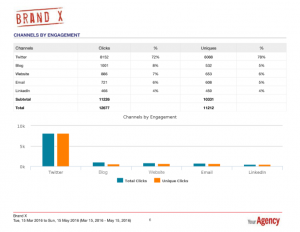Knowledge management and advanced analytics are two of the developments that promise to change how field service organizations operate. Organizations that grasp how to leverage these changes stand to drive efficiencies, improve customer service and boost profits. Below are seven must-watch strategies that will alter how mobile workforces do business.
1. Increased Leverage of Mobile Apps As mobile apps flood the marketplace, field workers will use them more and more to share data and ease their workloads. Mobile apps help field workers become more productive by leveraging the cloud to access customer files, calendars, routing information and even social media. This allows workers to instantly access information on customers, financials, and inventory and job locations instead of having to return to the office. Information is backed up and then compiled into reports for analysis and planning.
2. New Generation of Technicians The recession left a gap in the labor force, and now demand for field service workers is growing as the aging workforce retires. We will see a new generation of technicians emerge, and it will have much more proficiency in mobile tools and apps, in addition to a strong grasp of the importance of the cloud and other next-generation solutions in driving success. This new breed of worker will be quick to adapt to change and embrace technology to resolve issues, increase efficiency and collaborate with co-workers.
3. Rise in Data-Driven Productivity
Big data flows into organizations in various formats from a vast array of sources, including websites, social media and company systems. Collecting, organizing and drawing insights from these massive volumes of data will help field service organizations improve services and operations, and stand out from competitors. Companies will need to review historical data, identify patterns and compile metrics for predictive analysis and strategic business planning. By leveraging data from multiple systems, including content management, data warehouses and specialized file systems, companies can better understand their operations and customer needs, and make decisions that drive customer satisfaction and increase profits.
4. Cloud-Driven Transformations The benefits of cloud-based software will continue to give businesses significant advantages. KPMG’s Technology Innovation Survey 2013 ranked the cloud as “the biggest driver of business transformation for enterprises in the next three years,” citing real-time information and productivity as key derivatives. Best-in-class field service organizations know the cloud makes them more flexible in meeting customer demands, so the question is no longer whether you should deploy cloud solutions but when. Organizations must evaluate and implement cloud services as methodically as with on-premises applications to remain agile and effectively meet customer needs.
5. Aggregation of Knowledge Management
Information gathered from the array of technology tools and systems used by field service organizations is often used separately for specific tasks, and in some cases forgotten in databases and unused files. But if aggregated in a digestible form, the information can drive innovation and stimulate change. This is called knowledge management, which is typically tied to specific goals, such as increasing competitiveness, enhancing staff expertise and improving communication between different departments. In the future more organizations will grasp the importance of knowledge management as a cross-discipline in shaping strategy and direction across the enterprise.
6. Better Integration of M2M Machine-to-machine communication is transforming how companies do business. Data transmitted from devices in the field to applications in the office can lead to decisions that significantly improve the business. In field services, that data flows in from GPS and in-vehicle data-capturing devices, as well as ruggedized handheld computers used for invoicing and confirmation of deliveries and task completion. In addition, sensors and monitoring devices on everything from household appliances to utility meters to complex machinery in oil fields transmits data on diagnostics, measurements, temperature and overall conditions, all of which is instrumental in preventing equipment failure, scheduling maintenance, and improving safety and energy consumption.
7. Profit-Driven Analytics Companies will increasingly rely on data collected through fleet and workforce management solutions to drive operational intelligence, improve customer service and efficiencies and boost profits. By leveraging analytics tools, companies can better enforce worker accountability and optimize planning. Analytics helps identify top performers, determine which schedules and routes produce the best results, and compare results from single workers and teams against the entire fleet. Aberdeen says best-in-class organizations leveraging analytics see profits increased by nearly 20 percent, customer retention by 42 percent and SLA performance by 44 percent. In an increasingly competitive market, this translates to higher efficiency, increased customer satisfaction and an optimized bottom line.
Business Articles | Business 2 Community
(326)







